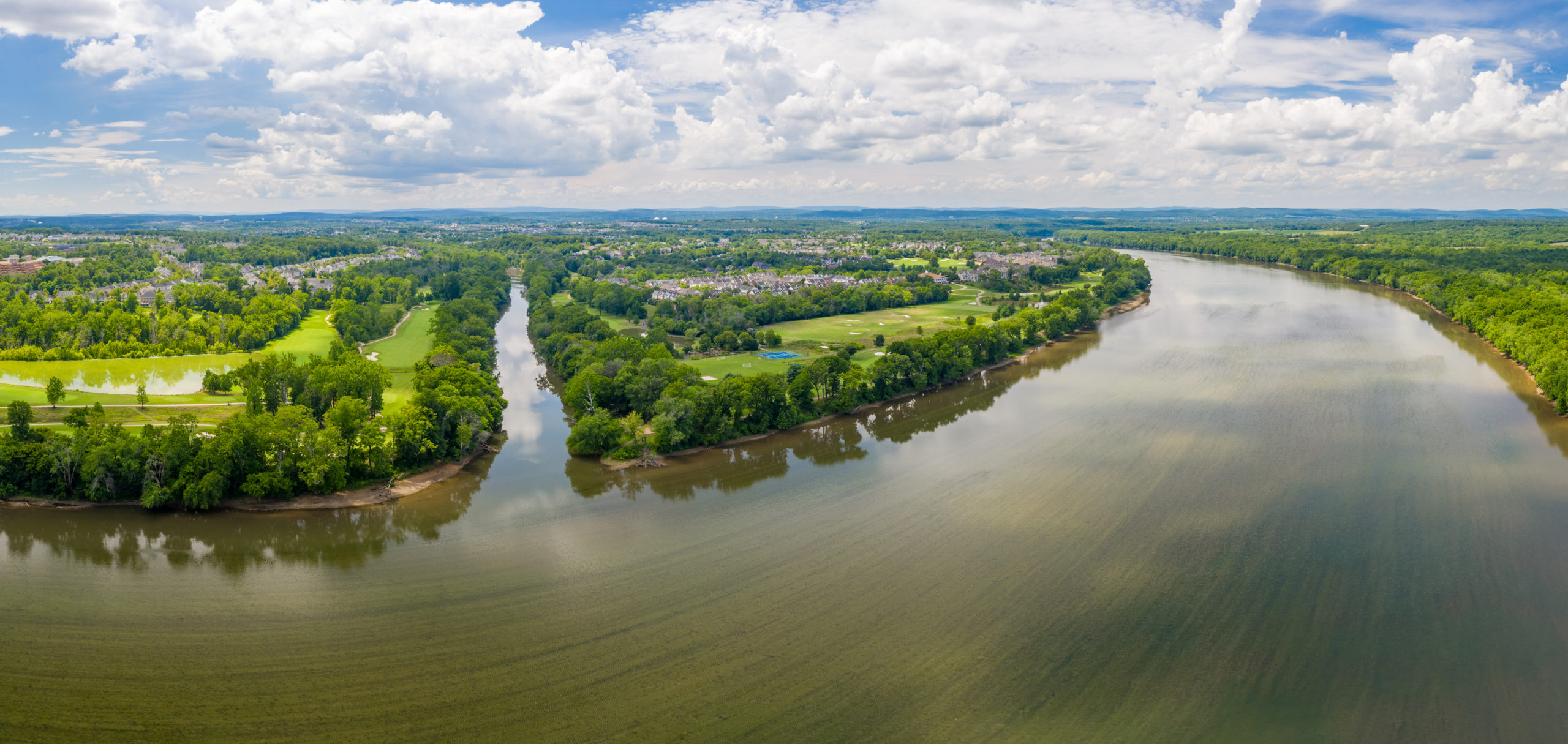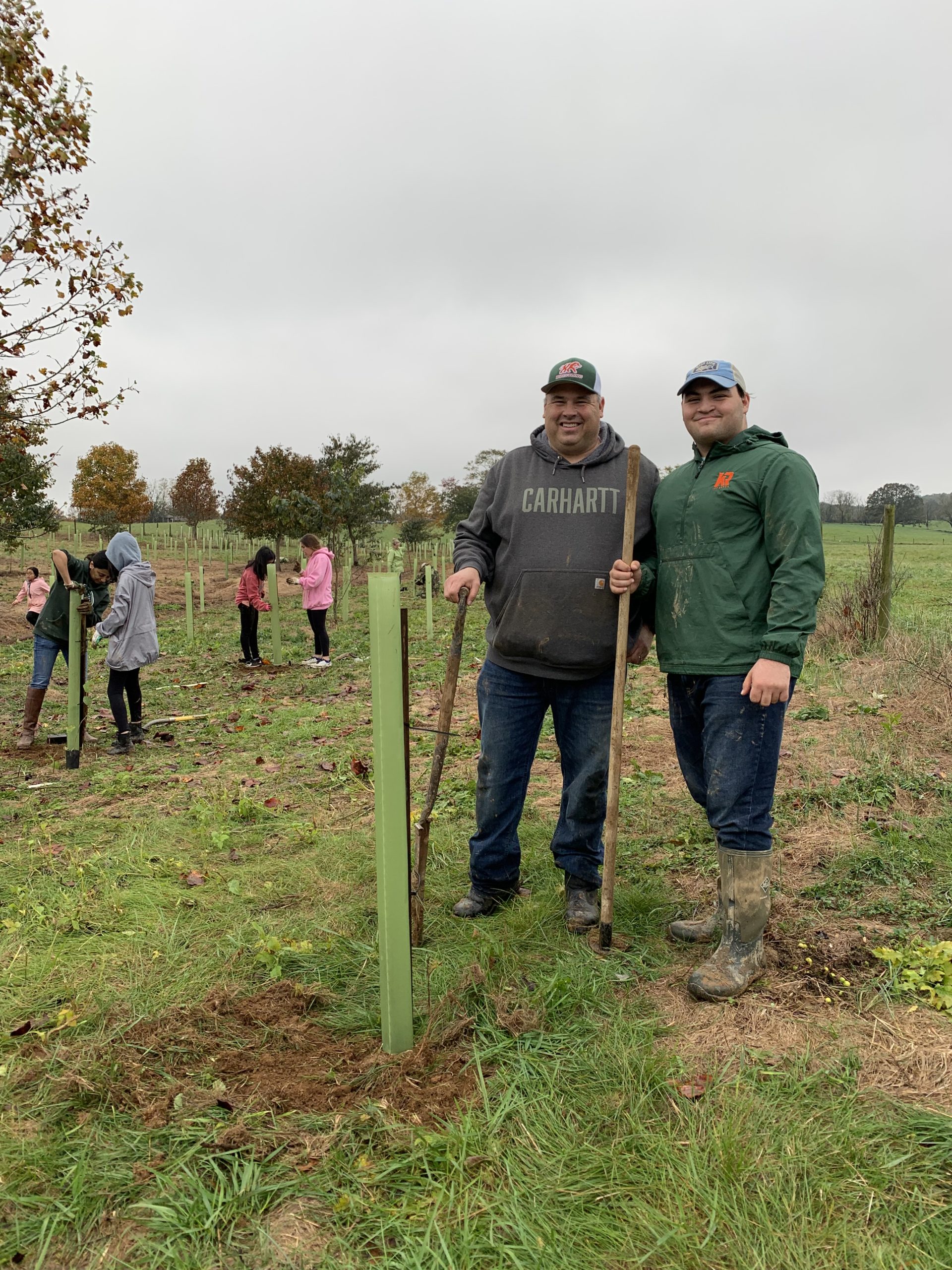
Everyone knows that water is an essential element of life. But not just any water—it’s clean water that we can’t live without. Within The Piedmont Environmental Council’s nine-county region, thousands of creeks, streams, rivers, and aquifers are part of the 64,000-square-mile Chesapeake Bay watershed, which provides drinking water to 18 million people. With a high concentration of livestock farming along their banks, and every resident living within just a few miles of any one of these waterways, many streams suffer from too much nitrogen, phosphorus, E. coli, sediment, and other pollutants—which all flow downstream to the Bay.
Virginia is part of a multi-state effort to reverse the impacts of pollution in both our inland waters and the Bay. Here within the Rappahannock and Potomac river watersheds, PEC is working with landowners to advance this effort through land conservation and beneficial land management practices, such as maintaining wide areas of vegetation along stream banks—called riparian buffers. This fall, we received two important grants—a $263,800 Chesapeake Bay Small Watershed Grant from the National Fish and Wildlife Foundation and a $21,500 grant from the Virginia Environmental Endowment—to support and expand the work of this Headwater Stream Initiative, launched in 2016 in partnership with Friends of the Rappahannock.
“I’m excited about these grants because they are going to empower community members who may not otherwise have the means to improve water quality on their properties and downstream. It’s also a golden opportunity to raise public awareness about the importance of land conservation and how individual management practices can benefit the region as a whole,” said PEC Potomac Watershed Field Representative Hallie Harriman.
Land Conservation
Fundamentally, one of the best tools for protecting and improving stream health is the conservation easement. They can protect land from unsustainable development and can require beneficial management practices that minimize stormwater runoff, erosion, pollution and loss of aquatic habitat. One of our grant goals is to work with landowners and conservation partners to protect 1,200 more acres of streamside land in this region.
We also hope to update some of the 168 existing conservation easements, covering 22,588 streamside acres, that were put into place before the benefits of management practices were fully understood. “By updating these easements to include and protect a 35-foot buffer of trees on either side of the stream, or fencing to keep livestock out of stream, we can make a big difference in improving our drinking water,” said PEC Rappahannock-Rapidan Conservation Initiative Coordinator Maggi Blomstrom.
Streamside Buffers
Whether they’re on conserved land or not, the benefits of riparian buffers are many. Streamside vegetation and their root systems filter out excess nutrients and pollution before it can enter a waterway. By stabilizing the stream bank, buffers help reduce floodwater velocity, erosion, and sediment pollution during periods of rain. They also serve as wildlife corridors, providing food and shelter for numerous wildlife species.
That’s why another grant goal is to create or restore 80 acres of riparian buffer in the region. Our first of many such projects took place at the end of October. “It was a cold and rainy weekend, but despite the mud, grit, and more mud, over 100 volunteers from many different partner organizations came together with us at Sky Meadows State Park. Together, we planted 750 trees on 3.4 acres of former farmland that contains an intermittent stream of the Goose Creek watershed, which is part of the Potomac watershed,” Hallie said.
Community Education

Another component of this grant project is working with our conservation partners to blanket the region with information about land conservation, riparian buffers, and water quality, and to connect landowners with the partners and resources needed for best management practices. Our goal is to connect with at least 100 rural landowners directly, through mailed informational packets, community workshops, and one-on-one meetings, whether they be virtual or in-person. And we hope these will all inspire a lot of word-of-mouth sharing by neighbors and friends.
Maggi said that an important value of these grants is that they bring together PEC’s expertise in land conservation with tremendous knowledge and additional funding of our watershed partners, including Soil and Water Conservation Districts, Virginia Department of Forestry, Goose Creek Association, Friends of the Rappahannock, We Plant Trees, Appalachian Conservation Corps, and the Natural Resource Conservation Service. “Our combined resources help us give landowners technical assistance, project design, materials, and labor for the riparian buffer plantings. We know this kind of collaborative, partner-based work makes a tangible difference in water quality.”
This story appeared in The Piedmont Environmental Council’s member newsletter, The Piedmont View. If you’d like to become a PEC member or renew your membership, please visit pecva.org/join.
